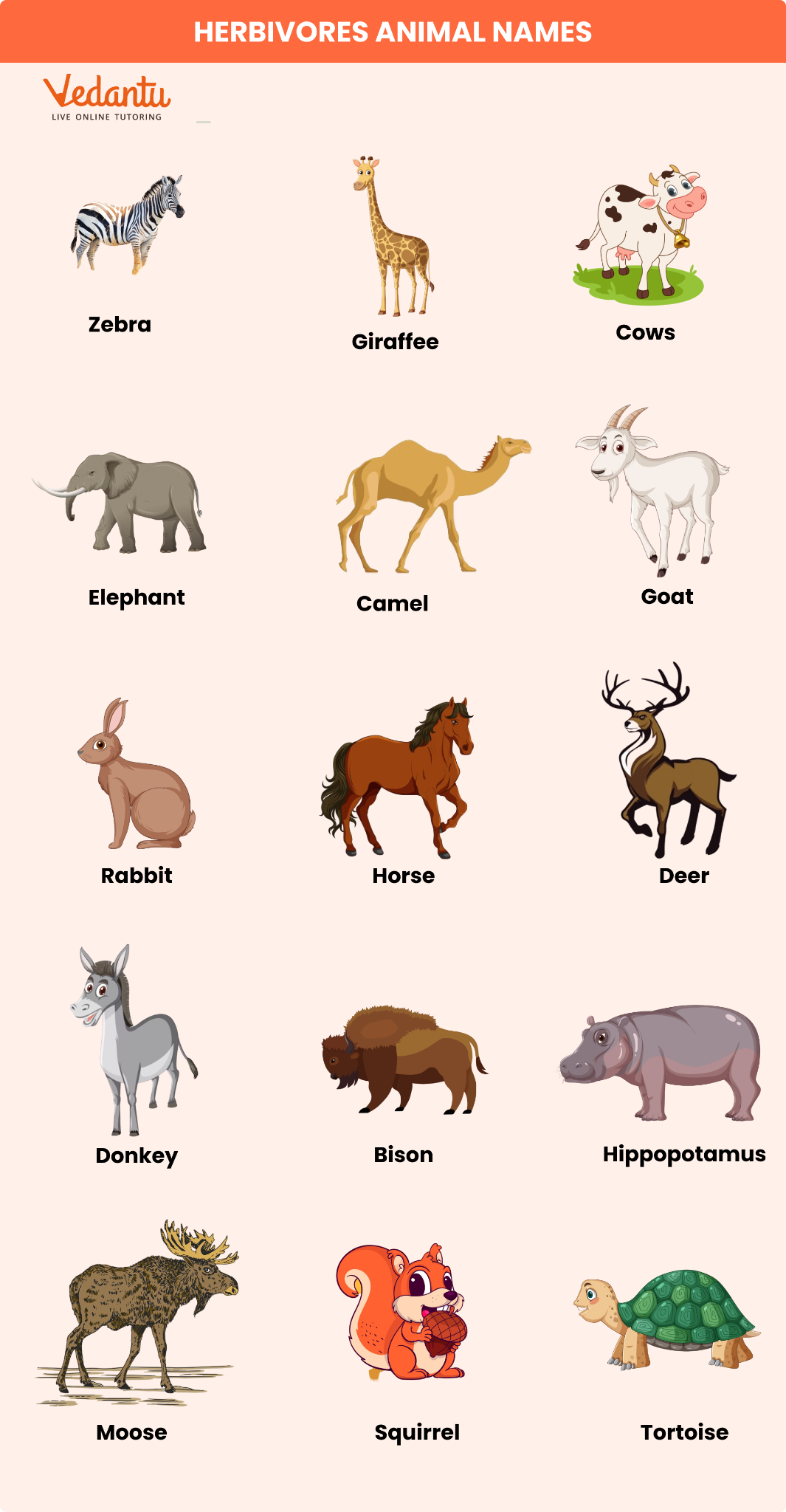




Herbivores Animals Name List
FAQs on Herbivores Animals Names: A Complete List
1. What is a herbivorous animal?
Herbivorous animals eat only plants. They do not consume meat or other animals.
2. Why do herbivorous animals have different types of teeth?
Herbivorous animals have flat, broad teeth for grinding and chewing plant material. They often lack sharp teeth for tearing meat.
3. How do herbivorous animals digest tough plant material?Many herbivores have specialised stomachs or multiple stomach compartments to help break down tough plant fibres. For example, cows have a four-chambered stomach.
Many herbivores have specialised stomachs or multiple stomach compartments to help break down tough plant fibres. For example, cows have a four-chambered stomach.
4. Do herbivorous animals get enough protein from plants?
Yes, herbivores obtain protein from various plant sources, such as legumes, seeds, and leafy greens.
5. How do herbivores avoid predators?
Herbivores often use strategies like blending into their environment, running quickly, or living in groups to avoid predators.
6. What role do herbivores play in the ecosystem?
Herbivores help maintain plant growth by grazing, which prevents overgrowth and supports biodiversity. They also serve as prey for carnivores.
7. Can herbivorous animals survive without access to water?
Most herbivores need regular access to water, but some, like camels, can survive long periods without it by efficiently storing water and conserving moisture.
8. Give Vegetarian Animals Name
Some vegetarian animals are Elephant, Giraffe, Cow, Horse, Rabbit, Goat, Sheep, and Deer
9. Are all herbivorous animals large?
No, herbivores come in all sizes, from small animals like rabbits to large ones like elephants.
10. How do herbivorous animals cope with seasonal changes in food availability?
Some herbivores migrate to find food, while others hibernate or adjust their diet based on available resources during different seasons.























